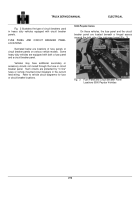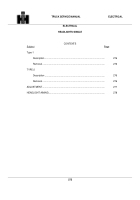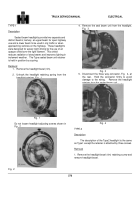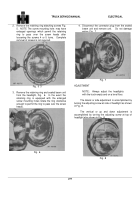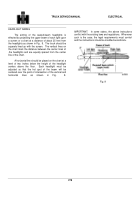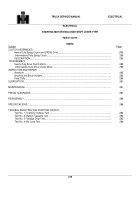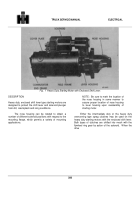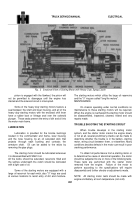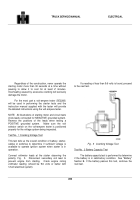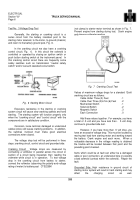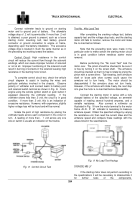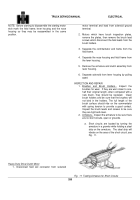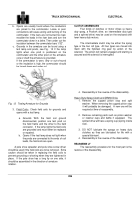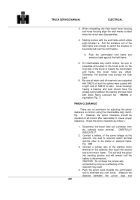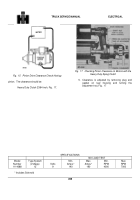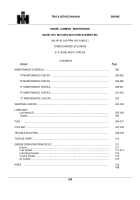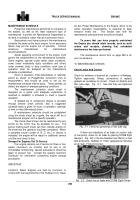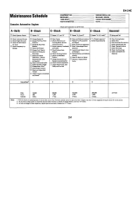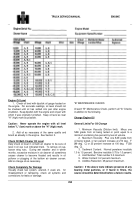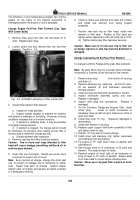TM-5-3805-254-14-P-2 - Page 288 of 894
TRUCK SERVICE MANUAL
ELECTRICAL
Connect voltmeter leads to ground on starting
motor and to ground post of battery.
The allowable
voltage drop of .2 volt is permissible. If more than .2 volt
is obtained, a poor ground is present, such as a loose
starting motor mounting bolt, bad battery ground
connector or ground connection to engine or frame,
depending upon the battery installation.
The excessive
voltage drop is located in much the same manner as in
the preceding test working toward the battery.
Control Circuit: High resistance in the control
circuit will reduce the current flow through the solenoid
windings, which can cause improper function of solenoid
or not at all.
Improper functioning of the solenoid could
result in burning of contacts in the solenoid causing high
resistance in the starting motor circuit.
To complete control circuit test, check the vehicle
circuit diagram to assist in locating the wires and
particular switches involved in the chassis.
Observe
polarity of voltmeter and connect leads to battery post
and solenoid switch terminal as shown in Fig.
8.
Crank
engine using the vehicle ignition switch or push button if
equipped observing the voltmeter reading.
If the
voltmeter shows less than .5 volt, the circuit is in good
condition.
If more than .5 volt, this is an indication of
excessive resistance.
However, with experience, slightly
higher voltage loss will be found and will be normal.
Isolate the point of high resistance by placing the
voltmeter leads across each component in the circuit in
turn.
A reading of more than .
1 volt across any one
wire or switch is usually an indication of the trouble.
Fig.
8
Control Circuit Test
Test No.
4No Load Test
After completing the cranking voltage test, battery
capacity test and the voltage drop tests, and the starting
motor still fails to function, remove the motor and make
the no load test as follows.
Note that the preceding tests were made in the
particular order to make certain the starting motor circuit
is in good condition before needless starter motor
removal.
Before performing the "No Load Test" look the
motor over.
The pinion should be checked to be sure it
is free by turning it on the screw shaft.
The armature
should be checked so that it is free to rotate by prying the
pinion with a screw driver.
Tight bearing, bent armature
shaft or loose pole shoe screws could cause the
armature not to turn freely.
The motor should be
disassembled if the armature does not turn freely.
However, if the armature will rotate freely, the next step
is to give the motor a no load test before disassembly.
Connect the starting motor in series with a fully
charged battery of the specified voltage, an ammeter
capable of reading several hundred amperes, and a
variable resistance.
Also connect a voltmeter as
illustrated in Fig.
9 from the motor terminal to the motor
frame. An R.
P.
M.
indicator is necessary to measure
armature speed.
Obtain the specified voltage by varying
the resistance unit, then read the current draw and the
armature speed and compare these readings with the
values listed in the specifications.
Fig.
9
No Load Test Hookup
DISASSE MB LY
If the starting motor does not perform according to
the specifications it will be necessary to disassemble it
for
further
tests
of
the
components.
284
Back to Top

